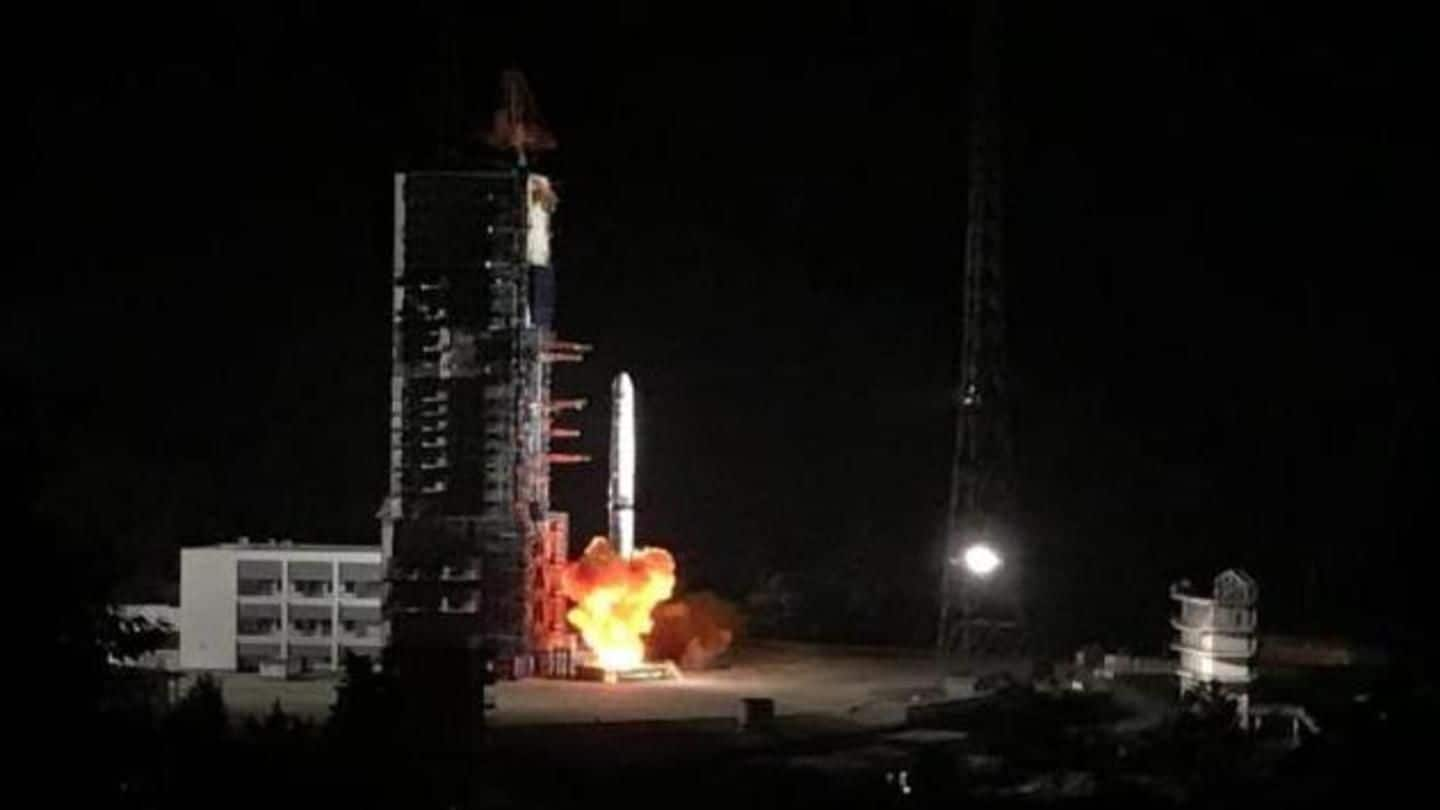
China launches 'Queqiao' satellite to explore Moon's far side
What's the story
China successfully launched a relay satellite early on Monday to set up a communication link between Earth and a planned Chinese lunar exploration mission to explore the Moon's mysterious far side.
Named Queqiao (Magpie Bridge), the 400kg satellite has a three-year designed life.
With this launch, China became world's first country to send a probe to soft-land on and rove the Moon's far side.
Perigee and apogee
Satellite enters Earth-Moon orbit with perigee at 200km, apogee 400,000km
The satellite was carried by a Long March-4C rocket that blasted off at 5:28am (local time) from southwest China's Xichang Satellite Launch Center, China National Space Administration (CNSA) said.
About 25 minutes after lift-off, the satellite separated from the rocket and entered an Earth-Moon transfer orbit with the perigee at 200km and apogee at about 400,000km. Solar panels and the communication antennas were unfolded.
First satellite
Expected to be first satellite to enter L2 halo orbit
Queqiao is expected to enter a halo orbit around the second Lagrangian (L2) point of the Earth-Moon system, about 455,000km from the Earth.
Reportedly, it will be the world's first communication satellite operating in that orbit.
The satellite carries several antennas. One, shaped like an umbrella with a diameter of 5 meters, is the largest communication antenna ever used in deep space exploration.
Requires little fuel
Can stay around L2 for a long-time using little fuel
Chen Lan, Deputy Chief Engineer of Xi'an Branch of the China Academy of Space Technology (CAST) said, "The satellite could stay in the halo orbit around the L2 point of Earth-Moon system for a long time by using relatively little fuel due to gravitational equilibrium."
Chinese scientists/engineers hope the Queqiao satellite will form a communication-bridge between controllers on Earth and the Moon's far side.
Unfolding the mystery
Other face of the Moon remains a mystery yet
Tidal forces of Earth have slowed the Moon's rotation to the point where the same side always faces the Earth, a phenomenon called tidal locking.
The other face, most of which is never visible from the Earth, is the far side or dark side of the Moon, not because it's dark, but because most of it remains unknown.
Exploration
Moon's far side is hotspot for scientific, space exploration
With its special environment and complex geological history, the Moon's far side is a hot spot for scientific and space exploration.
The Aitken Basin of the lunar south pole region on the far side has been chosen as the landing site for Chang'e-4. The region is believed to have great research potential.
However, landing and roving require a relay satellite to transmit signals.
Soft-landing
China first soft landed on Moon in 2013
The Chang'e-4 mission will be more complicated than Chang'e-3, China's first soft landing on the Moon in 2013.
"We designed an orbit around the Earth-Moon L2 point where the relay satellite will be able to 'see' both the Earth and the far side of the Moon," Bao Weimin, Director of the Science and Technology Commission of the China Aerospace Science and Technology Corporation, said.